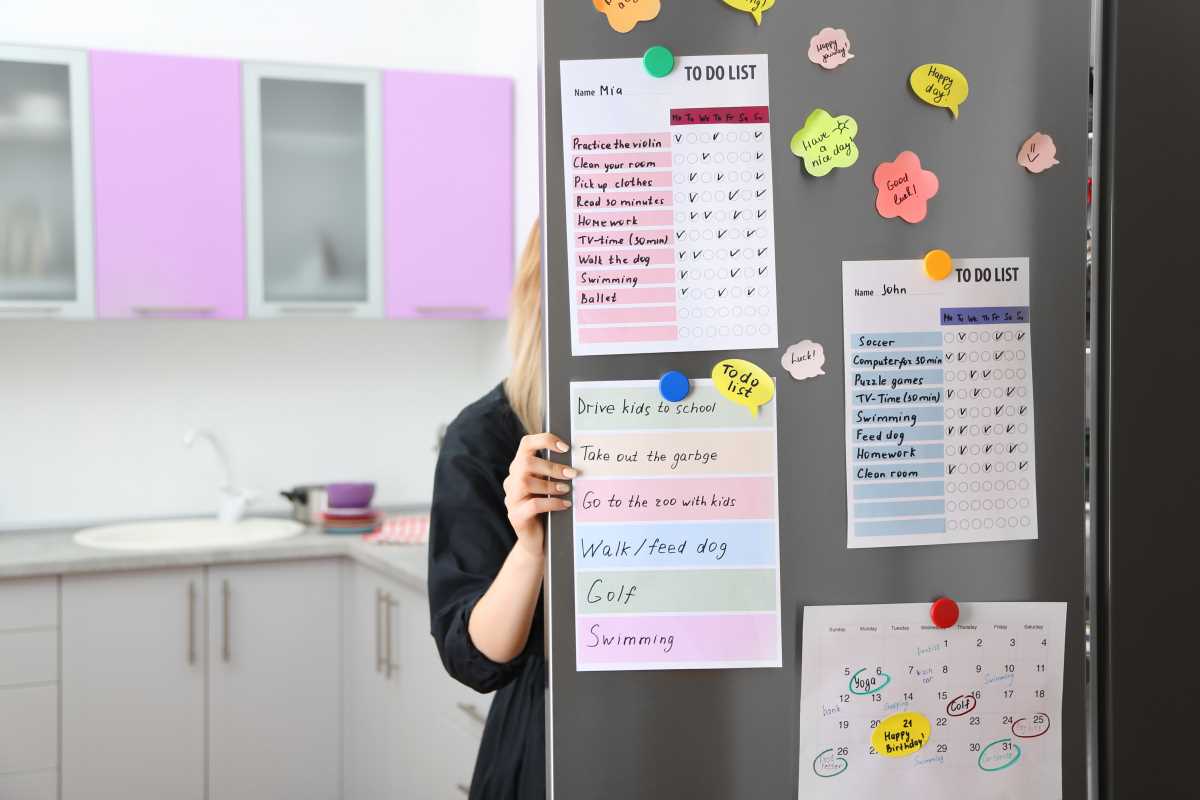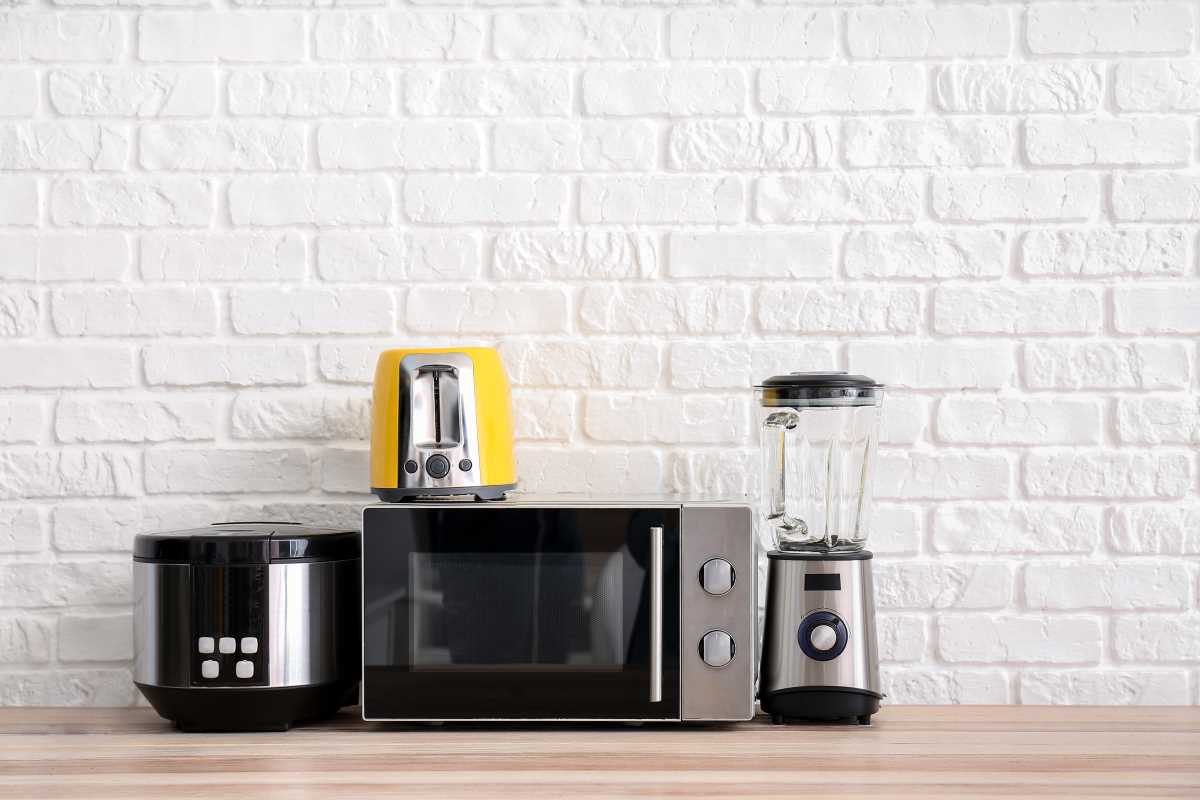Creating a family command center in your kitchen can truly make it the heart of your home, promoting organization, communication, and a sense of togetherness. Here's how you can create a practical and stylish family command center in your kitchen, covering everything from maximizing wall space to integrating a tech hub.
Maximizing Wall Space
The first step in creating an effective command center is to make the most of your wall space. Dedicate a section of your kitchen wall where you can install essential components like a corkboard, chalkboard, or dry-erase board. These visual aids can serve as a convenient spot for pinning important notes, reminders, and to-do lists that everyone can see. A wall-mounted calendar can also be a great addition, allowing you to quickly glance at upcoming events and commitments.
A corkboard or a chalkboard can be especially helpful for families juggling various schedules. Studies show that visual reminders can improve task management and memory retention, helping everyone stay on top of appointments and deadlines. Having all this information on the wall reduces the chances of forgetting tasks and makes daily planning a smoother process.
Dedicated Storage Solutions
Organized storage is the backbone of any command center. Adding shelves, hooks, bins, or cubbies can create a designated spot for essential items like keys, mail, backpacks, and reusable bags. Labeling each storage space ensures that everyone knows where things go, reducing clutter and helping family members find what they need quickly.
For a seamless look, consider matching your storage bins and baskets to the kitchen’s decor, whether it’s sleek, minimalist bins or rustic wooden crates. Using clear containers for items like mail and paperwork can help you spot items easily, reducing the time spent rummaging through piles. Research shows that organized spaces contribute to a sense of calm and can even reduce anxiety, making storage solutions that prevent clutter a valuable addition to your command center.
Calendar and Planner Area
A dedicated calendar and planner area is essential for keeping everyone in the family informed about upcoming events, school schedules, work meetings, and social gatherings. Whether you opt for a traditional paper calendar, a large dry-erase board, or a digital planner, having a centralized space for scheduling helps everyone stay on the same page.
Color-coding can make it even easier to keep track of each family member’s activities. Assign each person a color on the calendar, so you can quickly see who has commitments on any given day. For a digital approach, consider using a family calendar app that syncs with everyone’s devices, allowing real-time updates. This way, changes can be made instantly, keeping everyone informed and minimizing schedule conflicts.
Message Board for Communication
Communication is key in a busy household, and a message board is a simple yet effective way to facilitate it. Use a whiteboard, chalkboard, or even a framed memo board where family members can leave notes, reminders, or motivational quotes for each other. You might also consider a magnetic board for easy attachment of photos, flyers, or notes.
Having a spot to leave messages ensures that even if family members aren’t home at the same time, they can stay updated on important reminders or messages. Studies show that sharing positive messages can boost morale, so feel free to include encouraging notes or fun reminders to uplift everyone’s spirits. Over time, the message board can become a place of connection and positivity, contributing to a supportive family environment.
Task Organization Station
A task organization station is a great way to keep track of household chores and responsibilities, creating a sense of teamwork among family members. Create a chore chart or checklist to visually represent each person’s tasks. This could include a rotating schedule for daily or weekly chores, such as taking out the trash, washing dishes, or feeding the pets.
Visual task lists make it easier for everyone to see what needs to be done and feel accountable. Involving children in household chores also teaches valuable life skills, such as time management and responsibility. You could even add incentives or rewards for completing tasks, making it a fun way to encourage participation and celebrate each person’s contributions to the household.
Designated Tech Hub
In today’s digital age, a tech hub within your command center can be incredibly convenient. A charging station for electronic devices like phones, tablets, and laptops prevents devices from getting scattered around the house. This setup not only keeps devices organized but also reduces the chances of losing chargers or misplacing devices.
Consider installing a small shelf or tray where all family members can charge their devices in one central location. You might also include a smart speaker or family tablet that can be used to access calendars, play music, set reminders, or look up information quickly. While technology can simplify family life, setting tech boundaries—such as designated screen-free times—ensures that devices support your family routines without causing distractions.
Personalizing Your Command Center
Adding a personal touch can make the command center feel like an extension of your family’s unique personality. Consider incorporating elements that reflect each family member’s interests or hobbies, like custom nameplates for storage cubbies or small decorative items. For a fun twist, you could frame family photos or favorite quotes that align with your family’s values or humor.
Personal touches not only make the space inviting but also encourage everyone to engage with the command center regularly. Seasonal decorations can also bring a sense of warmth and change to the space, keeping it fresh and interesting throughout the year.
Practical Tips for Maintaining Your Command Center
Setting up a command center is just the first step; keeping it functional requires regular upkeep. Here are a few tips to maintain your family command center:
- Schedule a Weekly Reset: Dedicate time each week to tidy up the command center. Update the calendar, remove outdated reminders, and reorganize storage spaces to keep the area clutter-free.
- Encourage Daily Use: Remind family members to check the calendar and message board daily. This reinforces the habit of using the command center as a central communication tool.
- Adjust as Needed: As your family’s needs change, be open to adjusting the command center’s layout. New activities, interests, or family members may require tweaks to ensure the space remains functional and relevant.
Benefits of a Kitchen Command Center
Creating a family command center brings structure and organization to daily routines, promoting better time management and communication. When each family member knows where to find schedules, reminders, and essential items, life flows more smoothly, reducing the stress that often comes from disorganization.
A well-organized space can make everyone feel more connected and engaged. When responsibilities are shared, and messages are left, it creates a sense of togetherness and teamwork. The command center becomes a functional and sentimental hub, reinforcing your family’s bond and helping everyone stay organized.
 (Image via
(Image via





